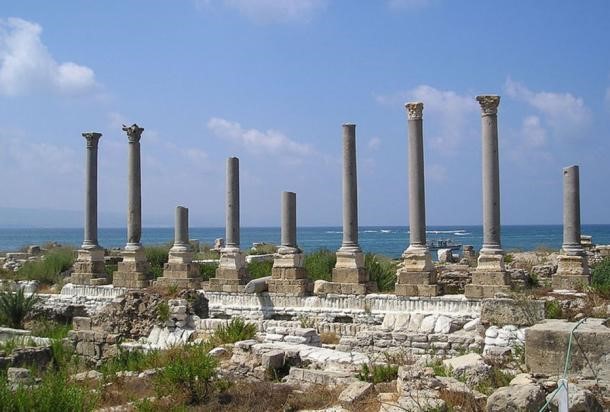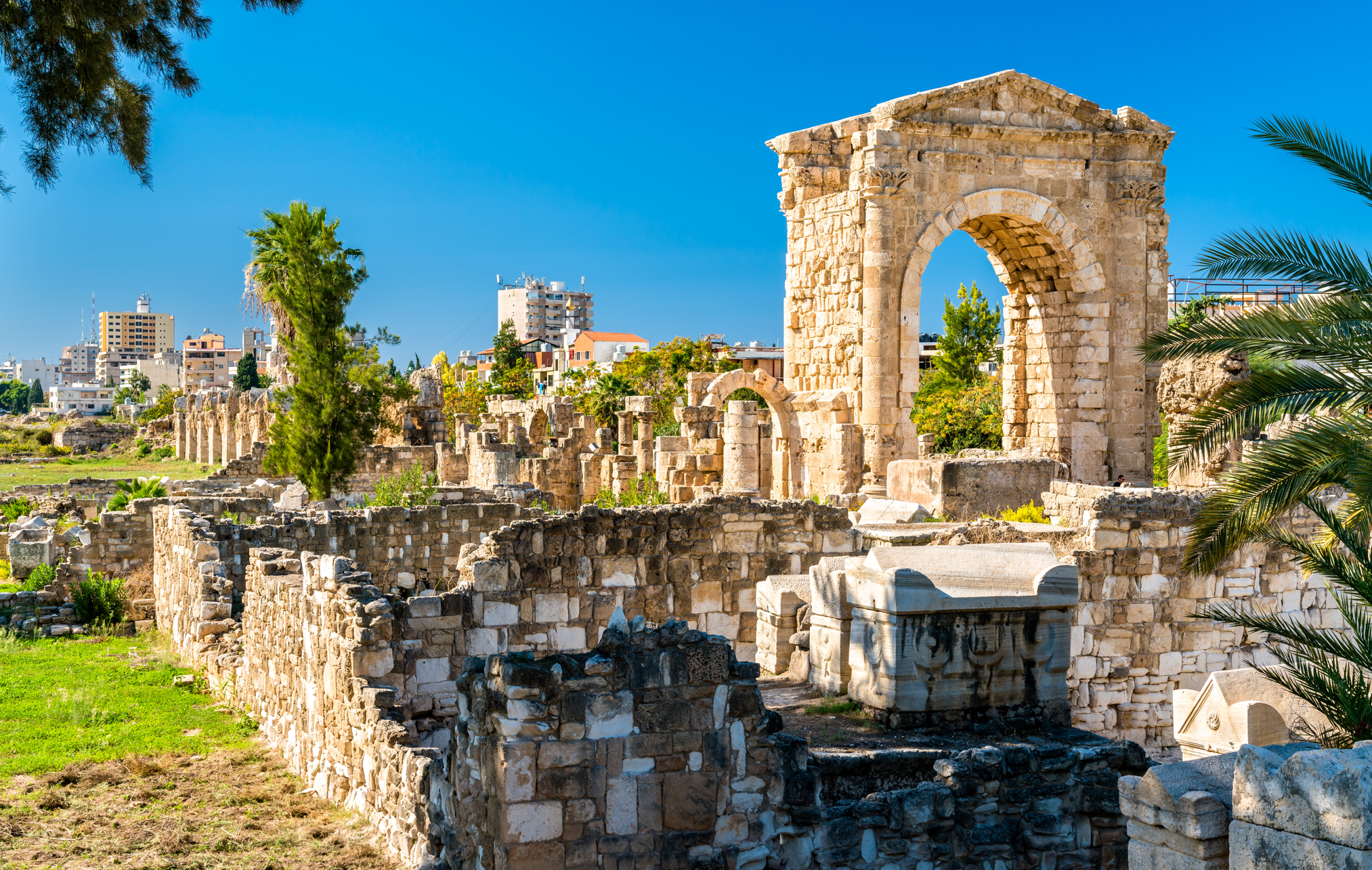
Tyre, an ancient city founded in 2750 B.C., ranks among the world’s oldest metropolises and boasts a rich history deeply intertwined with civilizations and legends.
The Tyrians, renowned seafarers and explorers, navigated the Mediterranean, making contact with various ancient Mediterranean cultures and establishing colonies. Greek mythology adds intrigue to Tyre’s legacy, with Europa, a Tyrian princess, famously abducted by Zeus in bull form and transported to Crete, where she became its first queen. Europa’s brother, Cadmus, is credited with introducing the alphabet to mainland Greece.
Tyre’s influence extended through the founding of colonies, notably Carthage, where the Tyrian princess Dido, escaping an oppressive marriage, established the city, a tale vividly portrayed in Virgil’s Aeneid.

Roman columns at the Al Mina excavation site. Wikimedia, CC BY-SA 2.5
Biblical history also highlights Tyre’s importance, serving as an ally and trade partner of Israel during the reigns of David and Solomon. King Hiram I of Tyre contributed to the construction of Solomon’s First Temple in Jerusalem. The Old Testament prophesied Tyre’s destruction due to its pivotal role as a trade hub, making it a coveted prize for regional powers, including the Egyptians, Assyrians, Babylonians, Persians, and Alexander the Great.
Alexander’s siege of Tyre remains a well-documented event, driven by his desire to sacrifice to Melqart, Tyre’s patron god. The Tyrians’ refusal to grant access to their island city led to a protracted siege, partly motivated by the need to deny the Persian navy a strategic port.
In 68 B.C., Tyre became part of the Roman Republic, marking the end of its golden era. Nevertheless, during the early Christian era, Tyre experienced a revival, becoming a provincial seat with 14 bishoprics. Arab conquests in A.D. 636 ushered in new rulers, and the Crusaders briefly reclaimed the city in A.D. 1124 before its eventual fall in the 13th century.
Today, Tyre’s archaeological treasures earn it UNESCO World Heritage status. Although inhabited by various civilizations, most preserved remnants date from the Roman and Crusader periods due to recurrent destruction. Researchers also delve into the city’s submerged harbors, illuminating its maritime heritage and tourism potential, hindered by regional instability.
Tyre’s enduring journey through time encapsulates the ebbs and flows of human history, preserving a remarkable past while offering glimpses of potential for the future.
Read more about the City of Tyre.
Top image: Tyre necropolis in Lebanon. Source: Leonid Andronov / Adobe Stock.






